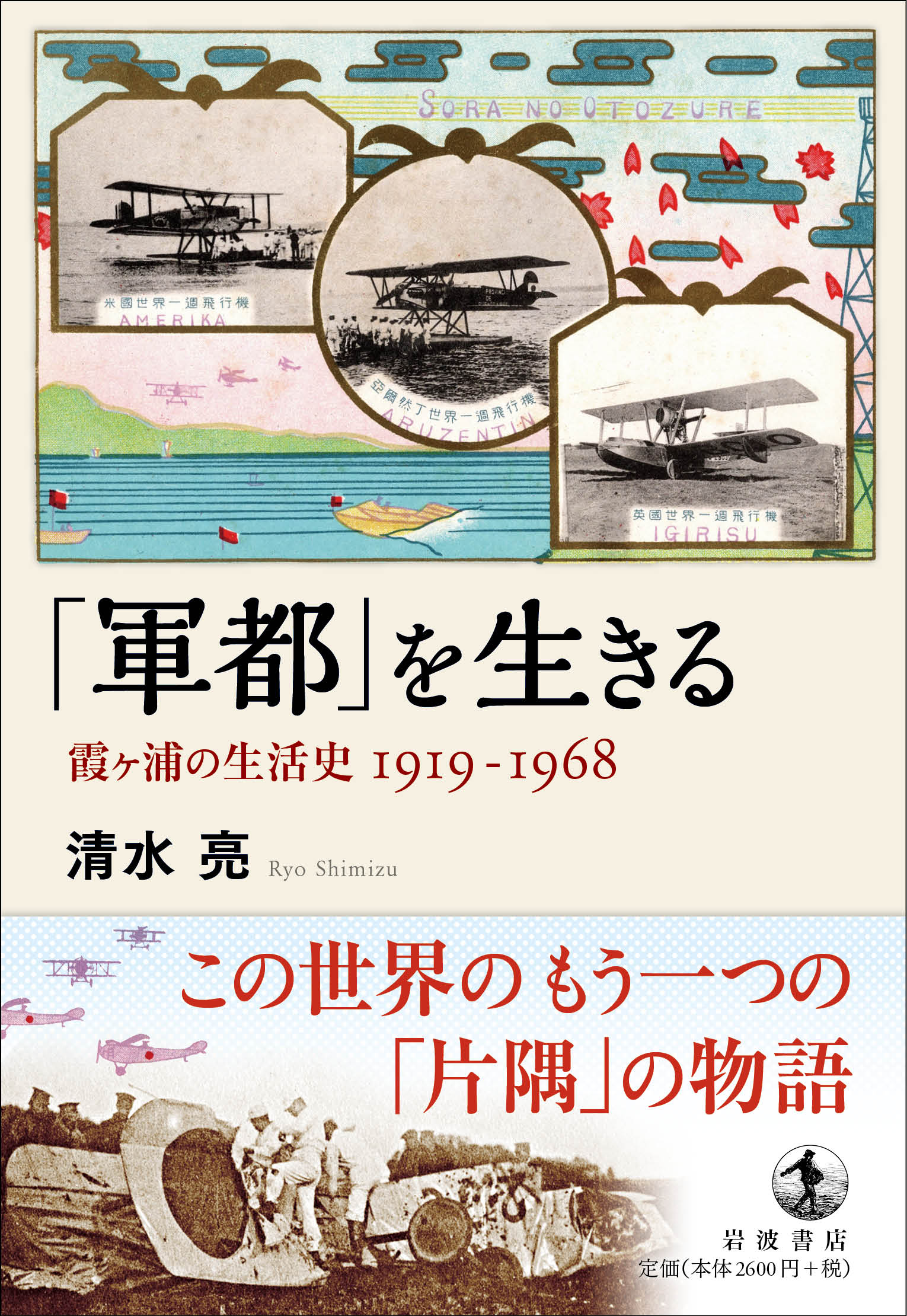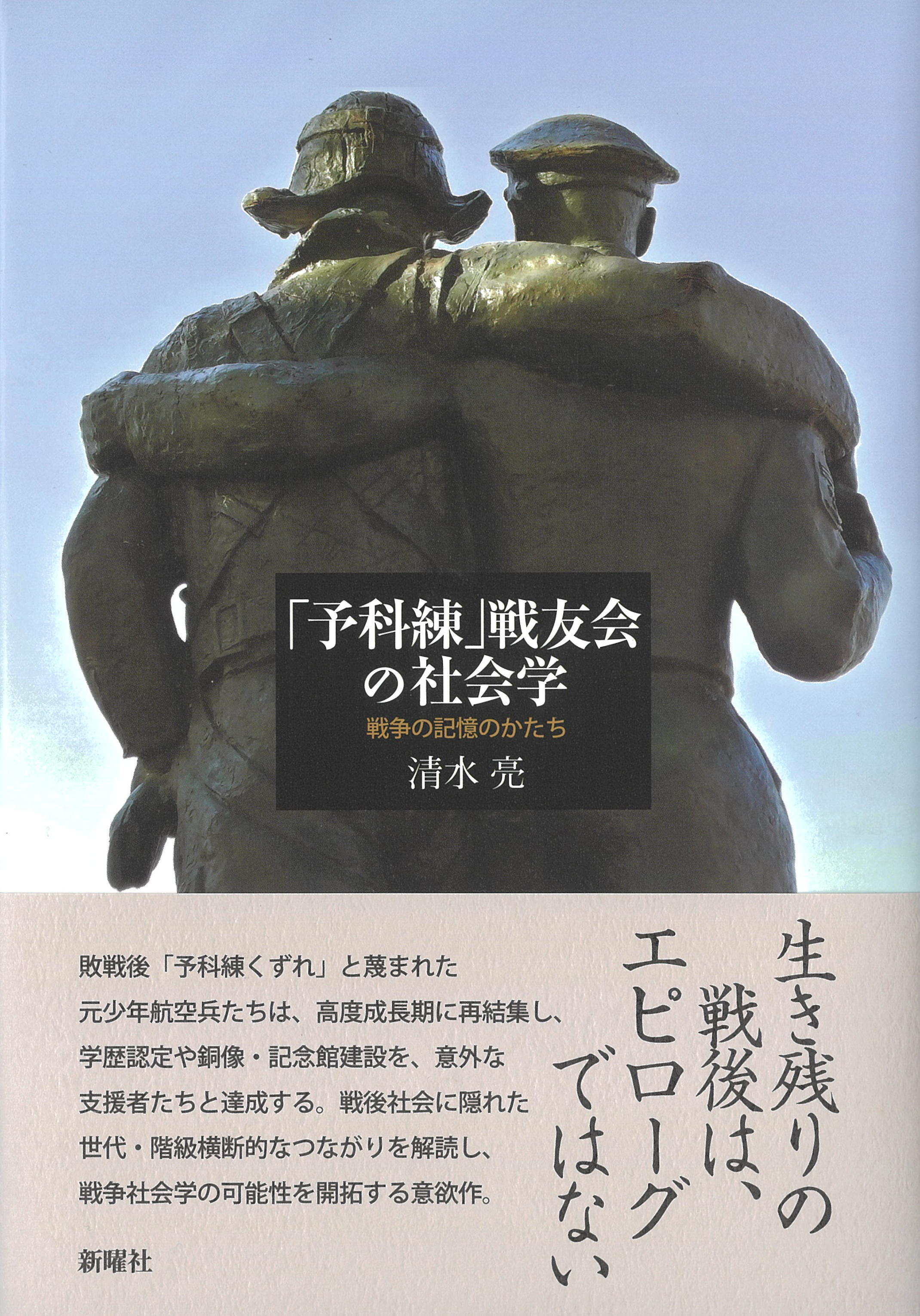
Title
Gunto wo Ikiru (Living in a military city - History of people’s daily lives in Kasumigaura 1919–1968)
Size
254 pages, 127x188mm, softcover
Language
Japanese
Released
February 16, 2023
ISBN
9784000226479
Published by
Iwanami Shoten
Book Info
See Book Availability at Library
Japanese Page
When one hears the term “military city,” which city comes to mind? It is well known that Hiroshima, the atomic-bombed city of peace, was once called a military city. Today, people may think of Asahikawa as a military city because of the influence of the manga Golden Kamuy. Before Japan lost World War II, there were military bases in various parts of the country, including Tokyo and other major urban areas. In that sense, Japan was something of a military city society back then.
Today, having bases or troops in the neighborhood may be foreign to many people who live in Tokyo, the capital city where the University of Tokyo is located. This could be a reflection of the rapid decline in land allocated for defense purposes in large urban centers in the postwar period. This book discusses Ami-machi and Tsuchiura City in Ibaraki Prefecture, where construction began for the Kasumigaura Naval Air Base immediately after the end of World War I. The area has a strong continuity between the prewar and postwar periods in that a Ground Self-Defense Force station was established there again after Japan lost WWII.
Learning from the fact that, in the study of history, the relationship among military cities, military ports, “air cities,” and local communities has been carefully explored in the field of “military and the community” with the use of primary sources, in this book, written by a sociologist, the author tries to adopt three new approaches as discussed below.
First, the focus of inquiry is not on the prewar military but on the postwar Self-Defense Forces. The research question is why an area that harbors bad memories, such as air raids targeting military bases, invited the Self-Defense Forces (the National Police Reserve and the National Safety Forces, which later became Self-Defense Forces) after the war. Here is a simple answer. In the first half of the 1950s, people did not expect that Japan would later achieve rapid economic growth. When Japan lost the war, it also lost the military bases that had supported the economy and saw the hollowing out of industry in the absence of such facilities. Thus, an economic revival with new defense bases held a strong appeal to people (Chapter 4). The historical context was the prewar experience of having thriving international “sky ports” and “sky cities” (Chapters 1-3). People’s experience with military bases was both positive and negative. Incidents of crime and violence that have been left out in local histories are brought to light in this book, with the goal of balancing clear explanations with complex historical descriptions.
Second, this book attempts to provide a history of people’s daily lives. This does not mean, however, that the book has many quotations from interviews conducted by the author. The book is mainly based on various written documents, such as interview memos and articles taken from local newspapers preserved in the area. Listening to the “voice” of written documents is also part of studying the history of people’s daily lives. The book explores the history hidden in places such as ryotei (traditional high-end restaurants), farmhouses, and lakes while utilizing preserved photographs. Such an approach is becoming increasingly important as people who have first-hand experience continue to decline in number.
Third, this book is an attempt at public history, an intersection of the narrative of local history with critical academic inquiry. The book is written in plain language to appeal to the local historians who have been a great help to the author, as well as the local residents whom the author interviewed. It is hoped that this book will provide a venue where people from diverse backgrounds can discuss history and reconsider the present against the fading of memories in a community that still hosts Self-Defense Force bases.
Thus, this book goes beyond historical science or sociology. Anyone who is interested in local, life-size history should turn the pages and experience history to the fullest.
(Written by SHIMIZU Ryo, Assistant Professor, Institute for Future Initiatives / 2023)



 Find a book
Find a book


